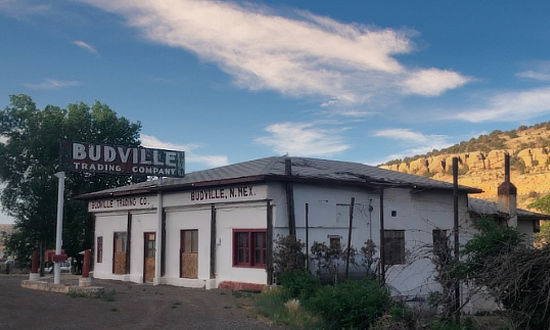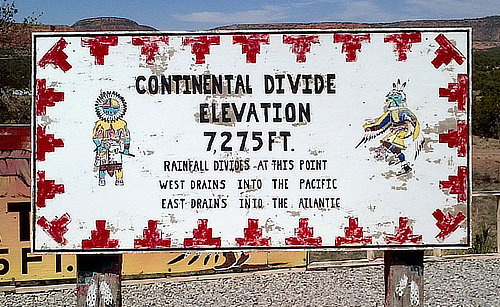Route 66 from Santa Fe thru Albuquerque to Gallup, NM
One of our favorite segments of the Mother Road is from Santa Fe through Albuquerque and westward to Gallup, New Mexico.
Santa Fe was one of the larger cities on Route 66 during its earlier alignments. The Mother Road passed through downtown near the historic LaFonda on the Plaza Hotel.
Santa Fe remained on the original Route 66 until 1938 when the road was rerouted on a more direct route to Albuquerque from the Santa Rosa area.
Map of Route 66 from Santa Fe thru Albuquerque to Gallup, New Mexico

View of Santa Fe and Old Route 66 looking west from La Fonda on the Plaza

|
View all hotels in Santa Fe, read traveler reviews and make reservations
|
Leaving Santa Fe Southbound on Route 66
In Santa Fe, Route 66 traveled along the Old Santa Fe Trail, passing the San Miguel Mission and Loretto Chapel and across the Santa Fe River to the historic LaFonda on the Plaza Hotel.
 Aerial view of present-day La Bajada switchbacks on old Route 66 Aerial view of present-day La Bajada switchbacks on old Route 66 |
From there it turned west on Water Street, and then left onto Galisteo Street and Cerrillos Road southward towards Albuquerque as shown in the map above.
The old route then passed the School for the Deaf and lodging properties like the El Rey Inn. Outside of town Route 66 followed the course of the Camino Real.
Leaving Santa Fe, Route 66 was relatively flat, as it traversed the La Bajada Mesa.
Route 66 Down La Bajada Hill
About 15 miles to the south, Route 66 made the steep, 500-foot descent down the La Bajada precipice in only two miles via a series of 26 switchbacks with a 28% grade. Bajada means "The Descent" or "The Drop" in Spanish, and the name was appropriate, as the road dropped about 1,000 feet in only 1.5 miles.
Remnants of the switchbacks and their scar on the earth can still be seen by hikers and those in high-clearance, 4-wheel drive vehicles, and from satellite photos like the one shown to the right.
In 1932 Route 66 was moved about three miles to the east near the current route of Interstate 25.
Read more about La Bajada Hill and El Camino Real at the National Park Service website.
| Switchbacks on Route 66 at La Bajada Hill between Santa Fe and Albuquerque View from the top of the mesa looking south (left) and from the bottom looking north (right) |
|
 |
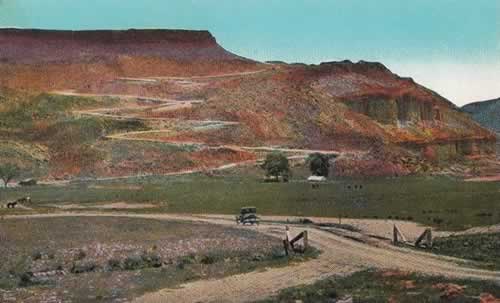 |
The "Big Cut" on Route 66
|
 The Big Cut as seen in this early 1900s vintage postcard |
South of La Bajada between Santa Fe and Albuquerque was the "Big Cut". Located near the present-day San Felipe Pueblo, this was an engineering marvel when it was completed in 1909 as part of New Mexico's Route 1. Route 66 passed through the notch from 1926 to 1931.
It consisted of a 75-foot long, 60-foot deep cut in Gravel Hill in the foothills of the Sandia Mountains made by hard working construction workers with dynamite, picks and shovels. The 18-foot wide roadway was no longer used when Route 66 was realigned in 1931.
Remnants of the cut can still be seen from southbound I-25 at Exit 252 in back of the casinos on the east side of the interstate.
Bernalillo ... The Historic Heart of New MexicoThe 1950s Cadillac and Route 66 sign in Bernalillo, New Mexico, along the 1926 to 1937 Route 66 alignment between Santa Fe and Albuquerque ... near 241 S. Camino Del Pueblo in Bernalillo ... a great photo op! |
|
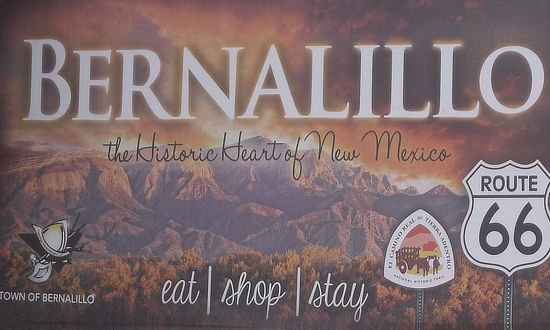 |
 |
 Night view of neon on Central Avenue in Albuquerque Night view of neon on Central Avenue in Albuquerque |
Visiting Albuquerque, New Mexico
The first route alignment of 1926-1937 ran north-south through Albuquerque.
Dozens of motels, cafes, gift shops and restaurants spring up along the route.
Today, the fastest route between Santa Fe and Albuquerque is I-25, a distance of about 65 miles. An alternate route is on the Turquoise Trail, Highway 14, through the quaint villages of Cerrillos and Madrid.
Some of these vintage motels remain, and historic neon signs still glow on old Route 66 through Albuquerque, now Central Avenue.
 |
Tourism is a big industry in Albuquerque, hosting events such as the International Balloon Fiesta.
It offers a variety of things to do such as the Sandia Peak Tramway, Indian Pueblo Cultural Center, National Museum of Nuclear History, San Felipe de Neri Church and Albuquerque Old Town.
The original length of Route 66 in New Mexico in 1926 was about 507 miles. Funding for a straighter, shorter route was approved in 1931.
With realignments and road improvements, the distance of Route 66 in New Mexico was reduced to 399 miles by 1937. The longest sections of the 1926 alignment created a large "S Curve" as it headed north to Santa Fe through Tecolate, Bernai, San Jose, Pecos and Glorieta Pass, and then back south to Albuquerque, as shown in the map below.
The 1926 alignment came into Albuquerque from the north on Highway 313, and ran through downtown along 4th Street. Today the Barelas-South Fourth Street Historic District just south of downtown is a popular attraction, with shops, restaurants and other businesses.
Route 66 then continued south to Los Lunas, where it turned west to Laguna.
This alignment was replaced in 1937 with a more direct westward route from Albuquerque to Laguna, and beyond to Gallup, following the current route of I-40 in many locales. Route 66 passed through downtown Albuquerque, running west-to-east on Central Avenue.
Route 66 alignment in central New Mexico in 1926 and post-1937
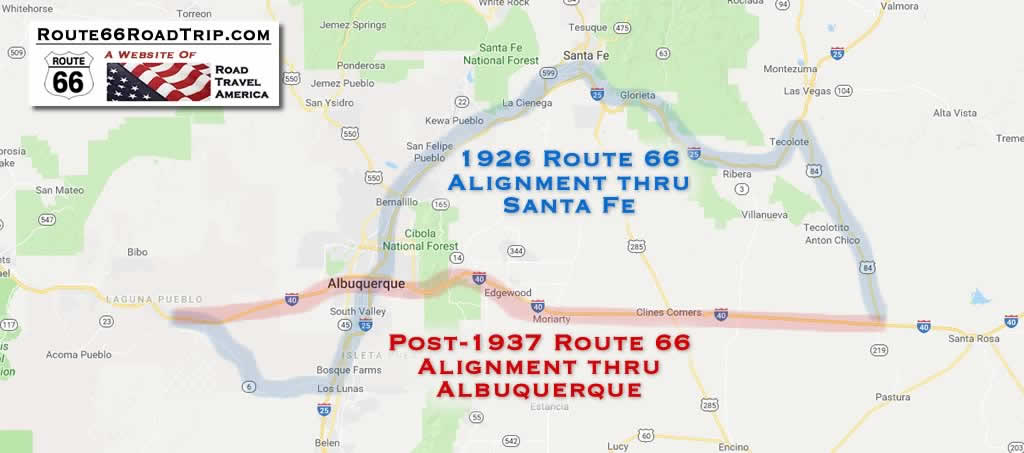
Anderson-Abruzzo International Balloon Museum in Albuquerque |
San Felipe de Neri Church in Albuquerque, New Mexico |
Downtown Architecture  |
Sandia Peak Tramway  |
Albuquerque West Central Route 66 Visitor Center
 West Central Visitor Center rendering by Mullen Heller Architect West Central Visitor Center rendering by Mullen Heller Architect |
Bernalillo County and the City of Albuquerque are developing the 21,000sqft Route 66 Visitor Center to be located at 12200 Central Avenue, atop Nine Mile Hill, near Atrisco Vista and I-40.
It will capitalize on the historic nature of the U.S. Route 66 and encourage motorists to get off the interstate to learn all about the city's heritage with the old road.
The $12 million multi-use facility will also house the New Mexico Music Hall of Fame, a taproom and be available for special events. It is scheduled to open in 2023.
More about the Visitor Center at the West Central Community Development Group website
Lodging & Dining Options in Albuquerque
|
Hotels in Albuquerque with Traveler Reviews Albuquerque Travel Guide |
Vintage Views along the way in Albuquerque
Tower Court |
Maisel's Trading Post |
Pueblo Bonito Court |
King's Rest Courts |
Crest-Hi Restaurant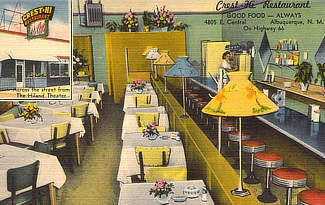 |
Zuni Motor Lodge |
Silver Spur Motel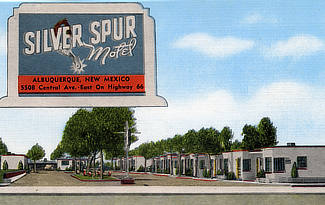 |
White Way Court |
Santa Fe RR Depot |
| Historic Route 66 Rio Puerco Bridge just west of Albuquerque | |
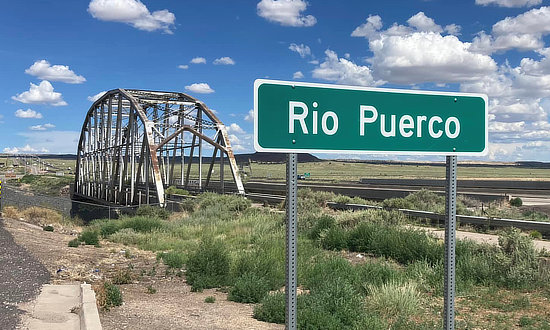 |
 |
Travelers on old Route 66 between Albuquerque and Grants often make a stop at the Budville Trading Company for a photo op. For those traveling on Interstate I-40, use Exit 104, about 46 miles west of Albuquerque. The building housed one of the businesses operated by Howard Neal "Bud" Rice and was built in the late 1920s. |
|
|
Grants, New Mexico
The City of Grants is located in Cibola County, roughly half-way between present-day Albuquerque and Gallup on Interstate 40.
Grants offers visitors a wealth of historical and recreational activities, despite being only two exits long. Several attractions are located in the city, such as the New Mexico Mining Museum and the Route 66 Vintage Museum & Double Six Gallery. Nearby is the La Ventana Arch in the El Malpais National Conservation Area.
The city sits at an elevation of 6,460', and is home to more than 9,000 residents.
A popular attraction today is the drive-thru neon Route 66 Arch, completed in 2016 and located off Exits 81 and 85. You park under the arch, and take "selfies" ... don't miss it!
Entering the Arch |
The "Selfie" side |
More Scenes Around Grants |
|
New Mexico Museum of Mining |
Santa Fe Railway Caboose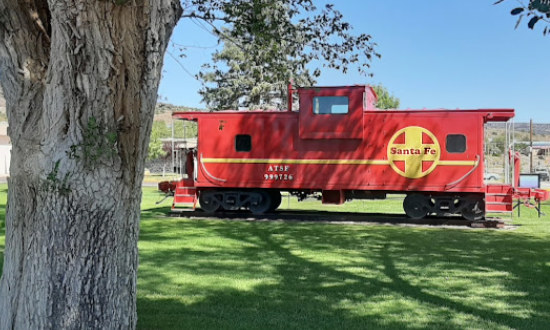 |
Lodging, Dining and Attractions in Grants ... from TripAdvisor
Grants Hotel Directory, Traveler Reviews and Reservations Grants Restaurant Listings and Reviews |
Earlier Times in Grants, New Mexico |
|
Franciscan Lodge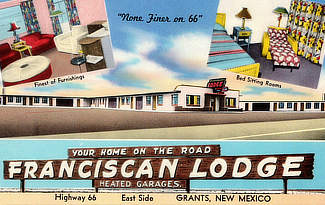 |
Grants Travel Lodge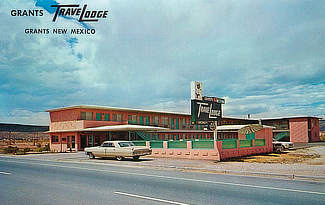 |
Continental Divide, New MexicoThoreau is located on old Route 66 and present-day Interstate 40 between Grants and Gallup. Just west of Thoreau, at Exit 47, is Continental Divide, at elevation 7,275 feet above sea level. There are multiple souvenir shops at the exit, and have been for years! |
|
Seen here is the the "Ya-Tah-Hey" gift shop, during a trip on this segment of Route 66 circa 2009. |
Continental Divide ... rainfall divides at this point, either to the Pacific or Atlantic Oceans |
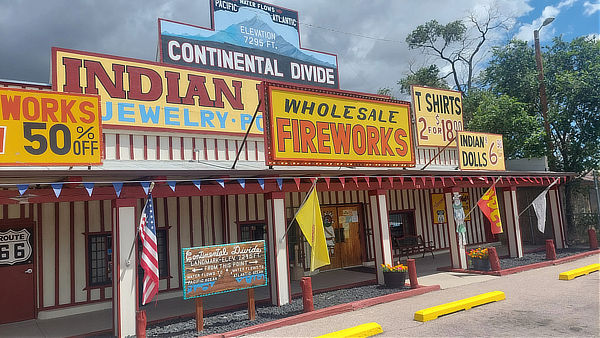 |
|
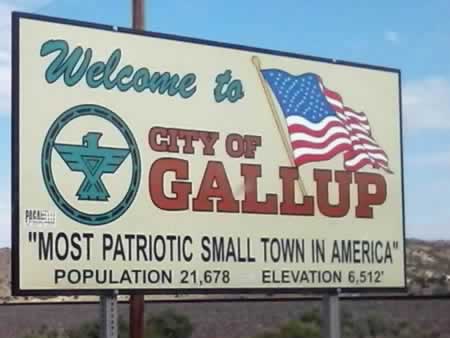 Welcome to the City of Gallup, New Mexico ... "Most Patriotic Small Town in America" Welcome to the City of Gallup, New Mexico ... "Most Patriotic Small Town in America" |
Visiting Gallup, New Mexico
Gallup is the largest city between Albuquerque and Flagstaff, and has a population of about 22,000 residents.
The city sits at an elevation of 6,512', and is known as the "most patriotic small town in America".
It is located about 140 miles west of Albuquerque, and 185 miles east of Flagstaff, and only 23 miles from the Arizona-New Mexico border.
The city is located in the middle of the Navajo Reservation.
The city was founded in 1881 as a railhead for the Atlantic and Pacific Railroad, and named after David Gallup, a paymaster for the railroad.
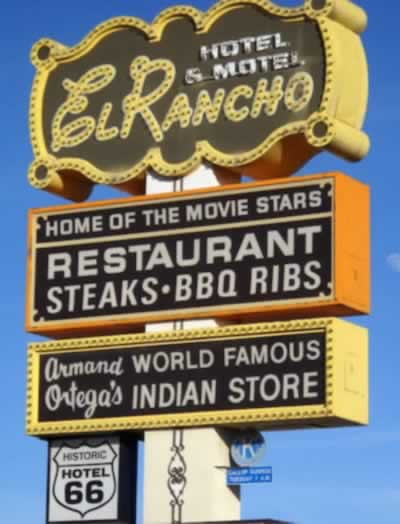 El Rancho Hotel & Motel in Gallup, New Mexico ... "Home of the Movie Stars" El Rancho Hotel & Motel in Gallup, New Mexico ... "Home of the Movie Stars" |
The railroad today remains an important industry in the city.
Because of the nearby rugged terrain, it was a popular location in the 1940s and 1950s for Hollywood Westerns and has hosted many well-known movie stars such as John Wayne, Katharine Hepburn, Humphrey Bogart, Ronald Reagan and Kirk Douglas.
Restaurants such as the famous El Rancho reflect the western and Indian influences on the town. Today’s visitors can partake in a meal at the El Rancho or enjoy an overnight stay and tour the memorabilia-lined grand lobby.
Gallup has over 30 hotels and over 90 restaurants and is a popular stopover point for those traveling Historic Route 66.
Area attractions include the Manuelito Visitor Center, the Navajo Code Talker Museum, the Gallup Cultural Center in the historic Santa Fe Railway depot, Red Rock Park & Museum, Bill Malone Trading Company and much more.
Shopping is also a big local attraction, with 110 trading posts, shops and galleries in Gallup, making the town the undisputed Southwestern center for authentic Native American art.
Retail stores in downtown Gallup, New Mexico
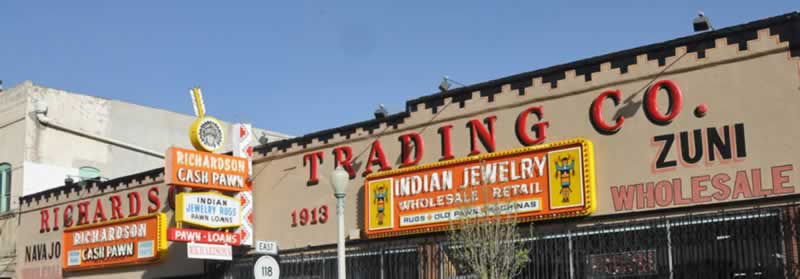
Hotel El Rancho in Gallup, New Mexico"Charm of Yesterday ... Convenience of Tomorrow" R.E. Griff came to Gallup in the early 1930s and loved the stark landscapes, mesas and endless vistas. He built the Hotel El Rancho in 1936 and it soon became a popular staging area for Western movie productions. During the 1930s and 1940s over 100 Westerns were shot in the Gallup area, with numerous stars lodging at the El Rancho. The large guest list included John Wayne, Katherine Hepburn, Ronald Reagan, Mae West, Kirk Douglas and many more. Today, the popularity of the hotel remains and is a favorite stopping point for Route 66 travelers! The Silver Screen restaurant features an original ranch-style dining room with high ceilings, exposed wood beam trusses and rustic cowboy décor. The Silver Screen takes an uncomplicated approach to familiar favorites with an emphasis on traditional Southwestern flavors. It’s a fun, casual setting! The elegant 49er Lounge is a great place to unwind and cool down after a day of roadtripping on Route 66! It’s widely agreed, the finest Native American artwork is created in New Mexico. And Gallup has been at the center of it all for more than 100 years. For much of that time the Ortega family has offered outstanding Indian arts and crafts at its shops here and in Arizona. Today, The Last Trading Post located in the Hotel Rancho specializes in rugs and blankets, silver and turquoise jewelry, pottery, Katsina (Kachina) dolls and carvings, and other traditional Native crafts from some of the Southwest’s finest artists. The Hotel is located at 1000 East Highway 66 in Gallup ... phone 505.863.9311 For more information, visit the Hotel El Rancho Website and Hotel El Rancho on Facebook Read traveler reviews and view more photos about the Hotel El Rancho on TripAdvisor |
|
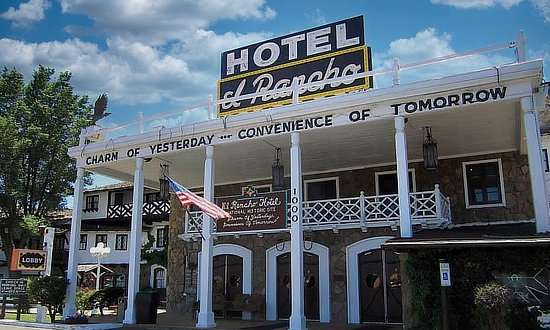 |
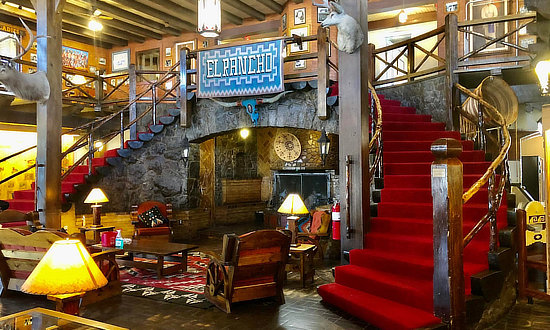 |
|
Gallup Hotel Directory, Traveler Reviews and Reservations Gallup Restaurant Listings and Reviews |
Vintage Views of U.S. Route 66 in Gallup
We have included below a sampling of our collection of vintage travel postcards dealing with Gallup and Route 66. These portray the historic road in its prime and help us to visualize "yesterday" as we drive Route 66 today.
Pete's Cafe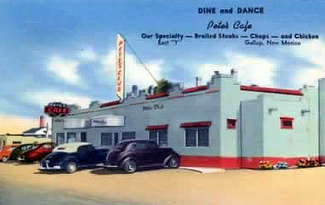 |
Casa Linda Court |
Log Cabin Lodge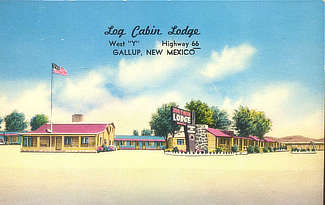 |
Colonial Motel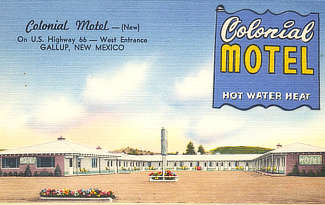 |
El Capitan Motel |
Ambassador Motel |
Pine Tree Lodge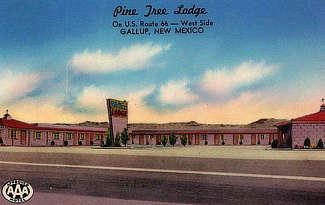 |
Arrowhead Lodge |
El Navajo Hotel |
Lodging Options Along Route 66
|
Hotels in Santa Fe, New Mexico Hotels in Albuquerque, New Mexico Gallup, New Mexico Hotels and Lodging |
MORE NEW MEXICO ROUTE 66 |
||
 |
 |
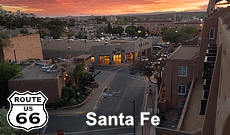 |
 |
 |
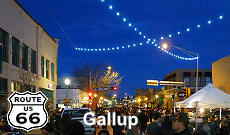 |
Travel Guides for Other Segments of Route 66
Planning a Road Trip on Route 66? Here are trip planners for the eight Route 66 states ...
 |
|||
 |
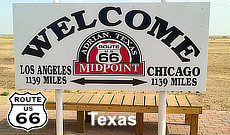 |
 |
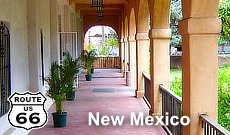 |
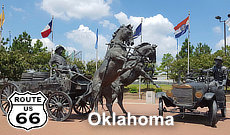 |
 |
 |
 |




